I am the new owner of a solid PINE interior peg, post, & beam home located on Oceanfront property on the East Coast of the US. I Love the wood; it’s why I bought the house BUT, I would like to minimize the orange of the tannins in this 30-year-old home and whitewash the wood white so I can still appreciate the wood grain, but end up with a beach house barn look vs the hunting/fishing cabin it currently feels like. I’m not going for a painted look – I very much love the wood here; it’s the most crucial part of the charm of the house.
I can see that the previous owners had that same idea, but it seems they applied a diluted water-based white paint (see the bathroom pix attached). The wood over time has shown thru to be a pinky-peach color, and the pine knots have leached their tannins thru to create what almost looks like cigarette smoke burns. And that’s not what I’m looking for. I’ll need to sand that back before I begin again.
Anyway…
Can you tell me if I’m on the right track with this thinking, please?
Application equipment recommendations and protective gear ideas are highly welcome!
And yes, I’m posting this same question on Deck care sites, and Home Painting sites as that applies here too!
I’ve done test swatches with multiple kinds of wood bleach and have found that 3-4 passes of full-strength household bleach on the raw pine get me to a lovely shade & tone – with just enough detail left in the wood grain. I’m considering buying the bleach as a pool cleaner – Sodium Hypochlorite (12.5%) and diluting it down vs buying Clorox from the grocery store.
Oxalic Acid seems to work for any minor rust stains and the tough old water leaks too.
Next, a pass of 50/50 vinegar to neutralize the layers of bleach.
At this point, I’m still at an ashen silvery peach color for the wood. To neutralize the orangy pink, I’ve dissolved steel wool in the vinegar – which oxidizes the tannin to a light grey (or dark black if you use it full strength). Using this method puts my vinegar neutralization and my slight steel wool pigment adjustments into one pass vs 2 (and that at this point fatigue will set in, so this is going to be helpful.)
Next, I’m thinking of an oil-based white floor stain – perhaps diluted so I can still see a lot of the wood, for a final whitewash look that ends up almost like a white wax type look in the wood grain (and it’s much easier and cheaper to apply than the waxes I’ve tried). And I know from testing and researching that water-based stains would activate any tannins still there, and I would end up with yellow-brown blotches of the pine tree knots showing thru that. And I love the knots; I don’t want to prime paint over them!
Ideally, I’d leave that surface then unsealed with the stain as a raw finish – I’m not looking for a glossy final product here. And I like grit and patina of things… I don’t want it to be too too precious.
FIRST, does that all sound like a good plan? This is not where I want to hear that I shouldn’t do this — that you prefer the Ralph Laren fishing cabin! But rather do you think my approach will work out, ok?
Or, for example, will the dissolved steel wool eventually “rust” thru the white oil stain?
Will any of these solutions kill my hinges and window hardware and promote corrosion and decay?
Should I use a diluted blue/green water-based stain instead of the steel wool to build back a bit of the contrast, so the wood grain is still a feature at the final step? And if so, can that water-based stain be mixed with the vinegar, so it’s one application vs two?
Or… Perhaps does the bleach do too much damage to the integrity of the wood? I would like it to look and feel a bit more like soft driftwood, so I’m not too afraid of this… But I don’t want to get a phone call in 20 years that my home has crumbled either.
SECOND: This is a big house, and I’d like to try to tackle this myself. So I’m researching equipment and protective gear.
2.1: Looking for advice finding a battery-powered deck sprayer for the bleach and vinegar process? Deck cleaner is the same Sodium Hypochlorite at a different strength after all. What I’m finding is that I can only get a hand pump for the corrosive liquids. Is there a battery-powered deck sprayer that can handle the bleach and vinegar? Or perhaps I buy a few of the cheaper battery powered sprayers and resign to the fact that the seals and motor may eventually wear out from my abuse? That I might go thru a few on this job?
2.2: Because I’m not looking for a perfect grey stain application (the whitewash will cover any inconsistencies), would that same sprayer I use for the bleach – also work for the vinegar/steel wool solution? Or should I move to a professional paint sprayer? (what sprayers are best for thin stains?) Dear God help me if it’s a brush?
2.3 I’m guessing a brush or a rag will get the correct type of inconsistent hand-applied application of white stain. But how could I speed this along? A paint sprayer might be too challenging to make a consistent thin application, and I could end up with blotches. Whereas a rag, or perhaps on a larger scale, a dust mop type tool might be better suited for a hand-finished beach house look.
THIRD: bleach and vinegar and steel wool thru a sprayer – that sounds like lung damage and skin & eye irritation. Thoughts on best/safest protective gear? Links to amazon products would be the most helpful, please.
FINALLY, what am I not asking that I should know? Am I overcomplicating this? Is there a faster way? Am I skipping something?
This is a big job for me, and I recognize that once I start – I won’t have the ability to hit an undo button – to fix any errors. And this is my home, so I’m very grateful for the FineWoodworking community guidance and insights here. Thank you so much for your attention and participation in my little project. Any help would be greatly appreciated!
Pix of the house today are attached, along with the original owners attempt in the bathroom and my rendering of the final goal – with the floor painted or stained a more opaque white ( I know, the maintenance, I know).
Cheers, David
 Shop Talk Live Podcast
Shop Talk Live Podcast Our favorite articles and videos
Our favorite articles and videos Fine Woodworking New England Event
Fine Woodworking New England Event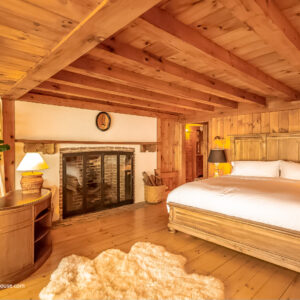
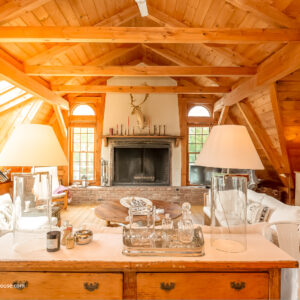
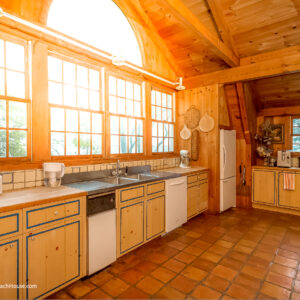
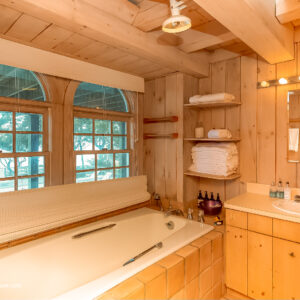
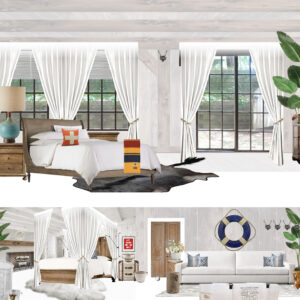












This post is archived.